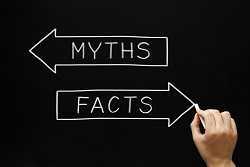Student Achievement Myths
Dispelling 9 common myths on how to improve student achievement
Student Achievement Myths – BY MERIS STANSBURY, MANAGING EDITOR FOR ECAMPUS NEWS, @ESN_MERIS
June 8th, 2015
Based on statistical examination, prof says there are clear distinctions in what works and what doesn’t for improving student achievement.

According to Dr. John Hattie, a professor and researcher at Melbourne’s Graduate School of Education, research and detailed statistical examination can determine which teaching methods actually improve student achievement and which are, essentially, a waste of time.
“Visible learning is about understanding the attributes of schooling that truly drive student learning and have a significant impact on student achievement,” explained Hattie. “As the school year comes to a close, summer provides an opportune time for teachers to reflect on their successes and challenges in the classroom. An important aspect of this reflection is figuring out what works and what doesn’t work when it comes to improving student achievement.”
Hattie said he spent more than 15 years conducting nearly 800 meta-analyses of 50,000 education studies focused on student learning. Because almost any education intervention can claim some positive effect on learning, Hattie said he performed a statistical examination of current research and developed a threshold to determine effect. The effect size threshold is d >0.40, reflecting one-year’s average student growth in one year.
According to Hattie, his findings align to current attempts to improve education, but there are several claims—on varying sides of the education debate—that just don’t measure up.
To give teachers a head start on the process of fine-tuning teaching for the next school year, Hattie explained nine common myths about how to improve student achievement.
- Myth: Smaller class sizes improve student learning.
Despite much of the current rhetoric, reducing class size doesn’t come close to meeting Hattie’s threshold for impact. In fact, his data shows smaller class size only marginally affects student achievement because teaching practices rarely change when teachers move from larger to smaller classes. The return on investment is also low when reducing class size because personnel spending goes up on more classes and teachers.
- Myth: Homework matters.
Only for older students (those in middle or high school who are reinforcing their learning at home related to what happened in the classroom) does homework substantially influence student achievement, said Hattie. To be effective, homework should be four things: brief, linked to the in-class lesson, monitored by the teacher, and not include new learning that disadvantages those who most need a teacher present. For younger learners, typical homework has little to no impact; but this effect could be increased with more homework relating to practicing something already taught in the classroom (which is the typical high school homework).
- Myth: Teachers need to soften critical feedback for students with praise.
While giving students positive reinforcement is important, coupling critical feedback with praise negates the impact the feedback has on improving student learning, emphasized Hattie. Teachers should work to create a positive, nurturing environment, so that students trust their teachers and set high expectations. However, critical feedback should be delivered with a different tone so students understand the importance of improving their work (and not merely listening to the praise).
- Myth: Teachers need to pick the right instructional methods to improve student learning.
According to his data, selecting the right teaching methods matters a lot less than teachers assessing the visible impact they have on their students. Expert teachers constantly monitor learning and seek feedback about their teaching, and then evaluate and adjust their teaching methods based on these findings.
- Myth: Content knowledge alone is enough.
Some education reform initiatives focus primarily on ensuring teachers have deeper content knowledge, particularly in secondary subjects. Yet, most teaching today occurs at the surface level, so in-depth subject knowledge is not as influential as many believe, he notes. It is only when there is a right mix of surface and deep learning does content knowledge matter. “Expert teachers organize and use their content knowledge to make meaningful connections among topics and concepts by using students’ prior knowledge and adapting lessons to meet students’ needs,” he explained.
Student Achievement Myths –Read the rest of the article, here
For an infographic on Hattie’s 800+ meta studies, click here.
=====================================================
To Discuss how these Solutions will add value for you, your organization and/or your clients, Affinity/Resale Opportunities, and/or Collaborative Efforts, Please Contact:
Tom McDonald, tsm@centurytel.net; 608-788-5144; Skype: tsmw5752 